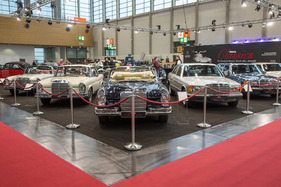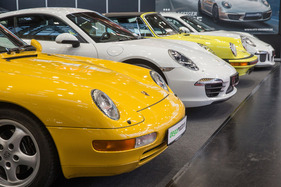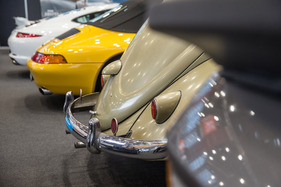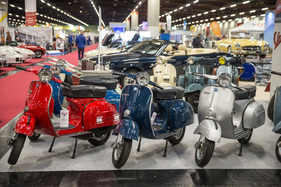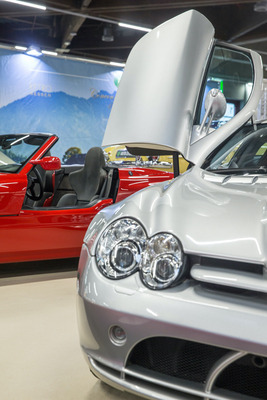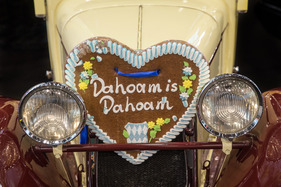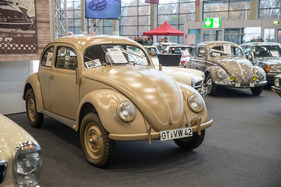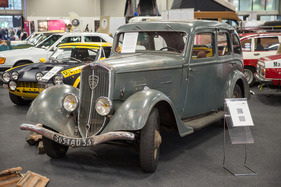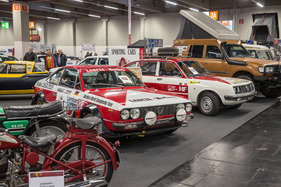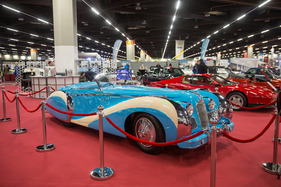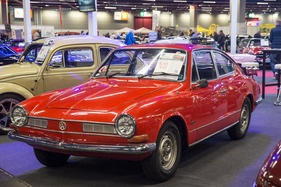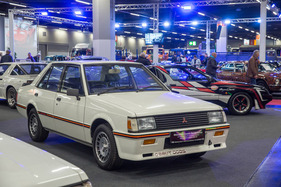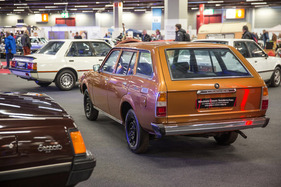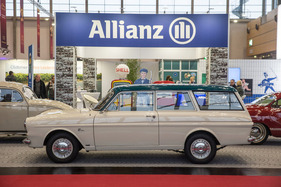Anyone who visited the last "Auto e Moto d'Epoca" trade fair in Padova and now looks forward to Retro Classics Bavaria in Nuremberg between 2 and 4 December 2022 will initially have the feeling of being the victim of a cost-cutting program. "The scene is multifaceted and colorful, which has undoubtedly suffered from the coronavirus pandemic - no trade fairs, fewer or no meetings, no markets..." Karl Ulrich Herrmann summarized the situation in the trade fair magazine. The German scene was probably hit harder than the Italian scene, as there was hardly any sign of the pandemic in Padova apart from a few people wearing masks.

Nevertheless, the sixth edition of the trade fair in Nuremberg was not a flop, as it proved to be small but nice with a good 25,000 square meters in two halls for classic cars. According to the organizers, around 20,000 visitors were counted, and on Saturday all hell broke loose, said one exhibitor.
Exciting vehicles
There were many interesting vehicles on display, including some that you are unlikely to see in everyday life. One of the highlights was probably the most valuable VW Beetle KDF Type 82e. The KDF car was one of the most important projects of the Nazi organization. With a price of 990 Reichsmark, the Nazis wanted to make the vehicle affordable for everyone. By the end of the Second World War, only 3206 vehicles had been produced.
The Beetle on display was a type 82e KDF car, which was a special production for the Wehrmacht at the time. This car was delivered to the Army Production Office in Kassel in May 1943. Three years later, the vehicle was sold to a private owner in Czechoslovakia, before Hermann Walter brought it back to Germany in 1987 and completely restored it. Since the restoration, the KDF car has been part of the Hermann Walter collection in Kaunitz. The increase in value from 990 Reichsmark to an estimated 320,000 euros is certainly not an everyday occurrence.
Forgotten Peugeot
The Peugeot 301D from 1935 was registered in November in the French department of Gironde. Not much is known about the gray-blue sedan from this period, but it is known that it was hidden for the first time at the turn of the year 1940/41 to prevent it from being requisitioned by German troops during the occupation of France.
In 2006, he literally saw the light of day again. When a house was demolished, the French limousine was rediscovered. A time machine that one wishes could tell us something about the past decades.
The other rally Lancia
When you think of Lancia in rallying, you almost automatically think of the legendary Stratos, which dominated the rally scene in the 1970s with world championship titles in 1974, 1975 and 1976. What hardly anyone remembers is that the coupé version of the Lancia Beta was also used in rallies, and quite successfully at that.
According to the creators in Turin, the Beta Coupé was to be given a sporty image and was thus sent to the 1974 and 75 World Rally Championship as a kind of back-up for the mid-engined Stratos monster - with success: the duo Simo Lampinen / John Davenport impressively demonstrated that rally success was also possible with front-wheel drive and helped to secure the 1974 and 1975 World Rally Championship.
Rarities
The Talbot-Lago T26 Grand Sport from 1948 is certainly a work of art in coachbuilding.
The car, bodied by Jacques Saoutchik in Paris, was advertised in Nuremberg at 3.5 to 4 million euros.
A very special rarity from Brazil was the Volkswagen Ghia TC with a 1600 Type 3 Beetle engine on display. Only six of these vehicles are known to exist in Germany. This model is almost unknown even to classic car connoisseurs.
Away from the big brands
The Porsche and Mercedes brands were of course also strongly represented at Retro Classics Bavaria. But you almost had to search for Audi or other major brands. The Japanese brand Mitsubishi was much better represented, as special and rare exhibits of the brand, which is also known from rallying, were on display in a special exhibition.
On display were the sensationally fast Lancer Turbo, but also a Lancer station wagon from the 1970s, of which there are probably fewer examples in this country today than of some Ferrari sports cars.
Pleasing variety
Anyone walking through the two large halls - there was also the ADAC SimRacing exhibition to visit in two other halls - could not complain about a lack of variety.
Other trade fairs may show larger numbers of vehicles, but in Nuremberg there were a few gems to admire that may not have been obvious at first glance. But precisely because the exhibition remained clearly laid out, there was enough time to separate the wheat from the chaff.







































































































































































































